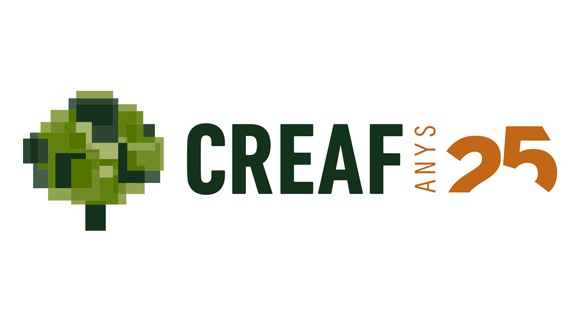25 years of history at the CREAF
This year, 2013, the CREAF celebrates its twenty-fifth anniversary. During this quarter of a century, the center has grown and evolved step by step to become what it is now: a model terrestrial ecology research center that provides cutting-edge scientific knowledge on the greatest and most complex environmental challenges that society faces in the 21st century.
Since the inception of the center, scientific aptitude growth has been accompanied at every moment by crucial institutional support. Nowadays, the CREAF relies intergrally on the Catalan Department of Land and Sustainability. Furthermore, from the same part of Government, the CREAF has received support from the Department of Economy and Knowledge, the Department of Agriculture, Livestock, Fisheries, Food and the Environment (through the management of the Department of the Environment and Biodiversity) and the Department of the Interior (represented by the General Directorate for the Prevention and Extinction of Fire). On the other hand, public entities of renowned scientific quality such as the Autonomous University of Barcelona and IRTA, the IEC and, since five years ago, the CSIC, are members of our Board of Trustees and fellow companions in this long history.
Holding an event this important in a context of crisis, like the current one, is a difficult challenge; investments in research have dropped considerably and, at the moment, very hopeful future is not forseen on the horizon.
The CREAF is optimistic and working to adapt to a difficult context, searching for new fund-raising strategies at the European level, and finding ways of expanding nationally and internationally, especially in relation to the private sector, and giving priority to their visibility.
Despite this, the center has launched fund-raising strategies through international activities and visibility promotion. The results, in fact, are already beginning to show. In terms of information diffusion, the center is widely present in the national media, has a very good reception in social networks and its experts are beginning to be the voices and references in contrasting and providing information about environmental issues that concern society. On the other hand, the leadership of the project MONTES-CONSOLIDER has managed to consolidate national connections with dozens of research institutions from all over the country. Along the same line, the center has initiated a strategy for the recruitment of researchers linked to other schools in order to form a network of associated researchers, which right now already includes people from six research bodies around the country.
At the international level, the year 2011 gave the starting signal for the first European project led by the CREAF, the project GEOVIQUA. Since then, the center has focused on developing a sound strategy for increasing its presence in Europe and the Mediterranean. Without a doubt, the start-up of the Office for Attracting European Funds has been a key to start a new path. Among others, the actions of internationalization have allowed the CREAF to form part of strategic European research platforms, improve our scientific recognition in the Mediterranean basin, suggest researchers as experts on key issues by the European Commission and, above all, to increase our participation in European programmes for R+D+I, mobility of researchers and research excellence. In the next few years the center will continue in this area by giving priority to the improvement of its visibility at the European level, positioning its scientific leadership in the Mediterranean and aligning its interests with those of the EU.
The growing recognition at the national and international level has been accompanied by increasingly excellent scientific research and results.
The International Scientific Committee, formed by the leading members of terrestrial ecology research, in the evaluation at the end of 2012, highlighted that the research results of the CREAF were directly contributing to building a better world and to saving it from the loss of the environmental capital that we all rely on. In addition, they considered that the center had scientists of exceptional expertise in studies of ecology and ecosystem processes, as well as with a dozen qualified research members with "top profiles" – very prestigious and recognized all over the world.
The scientific production of the CREAF was valued equally by international experts, that in the last five years has included discoveries of great interest in the fields of biodiversity and global change, and that there has been a lot of scientific information and very relevant on Terrestrial Ecology and interactions between the Earth and the air. This evaluation has culminated this year with a record of scientific publications in indexed journals that climbs to the 123 publications, three quarters of them published in magazines of impact in the first quartile.
Thus, the CREAF has lived an unprecedented transformation, since its creation in 1988, and especially during the last few years, which is carrying another sphere of quality and volume of science. This is the way to go and we have to be apioneering research centre and recognized internationally. We will continue fighting for years to come because it will become a reality.








